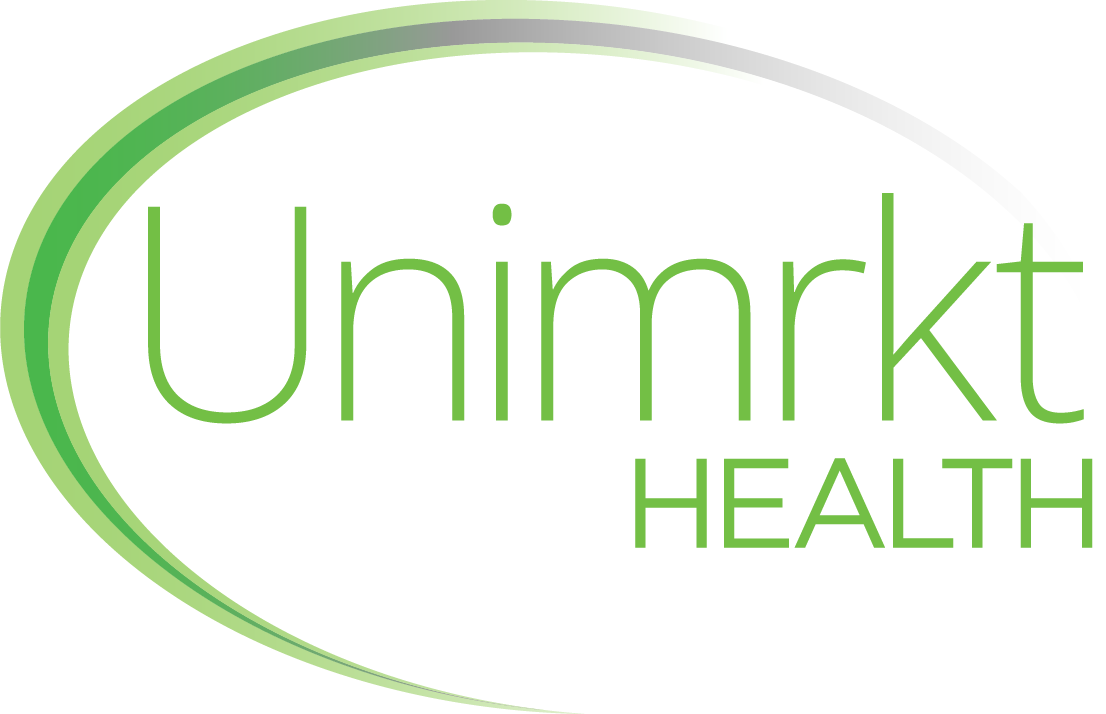Importance of Message Testing in the Pharmaceutical Industry
- Unimrkt Healthcare » Blog » Importance of Message Testing in the Pharmaceutical Industry
Healthcare businesses are on a constant lookout for ways to gain an edge over their competitors by providing customers with personalized services. For that to happen, they must focus on improving their service quality, speed, and efficiency. Getting traction with the target audience gains critical importance and with the kind of information overload plaguing consumers today, messaging becomes even more crucial. It comes as no surprise that message testing is more important than ever before, as brands struggle to retain their positions in the minds of their target audience. Message testing is a market research methodology, and out of many research methodologies in healthcare, message testing is considered to be one of the most effective. In this blog, we will discuss the importance of message testing in the pharmaceutical industry. Let’s get started.
Evolving landscape of healthcare communication and message testing
Healthcare communication is a dynamic facet where effective messaging is vital for conveying medical information to patients, caregivers, and healthcare professionals. The integration of accurate and comprehensible messages is crucial to ensure patient understanding, compliance, and informed decision-making. This is where message testing steps in as a crucial component. By utilizing various research methodologies in healthcare, such as mixed methods research, healthcare market research companies assess the effectiveness of communication strategies. Through meticulous analysis and feedback collection, message testing identifies the most impactful ways to convey medical information, tailoring messages to the needs and preferences of diverse audiences. In an evolving healthcare landscape, where precision and clarity are paramount, message testing emerges as a strategic tool to bridge the communication gap and enhance the overall healthcare experience. By utilizing a blend of qualitative and quantitative approaches, healthcare market research firms delve deep into the multifaceted aspects of healthcare communication, ensuring messages resonate with diverse patient demographics and address various concerns. With a focus on specialized research methodologies in healthcare, healthcare market research companies play a pivotal role in shaping effective communication strategies that bridge the gap between medical insights and patient comprehension, ultimately enhancing patient engagement and informed decision-making.
What is message testing?
Message testing is among the different types of health research methodologies that are used to determine how well a company communicates with customers about a certain brand, product, or service. Message testing, in particular, may help you know how to customize a message to your target audience for optimum impact. The market research methodology generally aims to figure out the impact of the marketing language used by companies when communicating with their audience.
Objective of message testing
Let’s consider a hypothetical situation. Suppose your company has developed a product that management is excited about. You may believe that the product or service fits a unique niche and that your brand self-evidently stands out among the competition. This excitement, however, might not resonate with your audience. The language you develop to communicate your breakthrough with your audience is often limited to the organization’s internal stakeholders’ belief system. When your company is developing messaging around a new or existing product, solution, or brand, it shouldn’t do so in this echo chamber. This is where deploying a message testing research methodology in healthcare can help.
Understanding the Impact of Language in Healthcare Messaging
The impact of language extends far beyond mere words; it encompasses cultural sensitivities, medical jargon, and the emotional resonance conveyed. Effective healthcare communication hinges on selecting language that not only conveys accurate medical information but also resonates with patients on a personal level. The use of clear and concise language can empower patients to comprehend their conditions, treatment options, and preventive measures. Conversely, complex medical terminology can lead to confusion and hinder patient comprehension. Healthcare professionals, therefore, must navigate a delicate balance between accuracy and accessibility when crafting messages. By tailoring language to suit the recipient’s educational background, cultural context, and emotional state, healthcare messaging can empower patients to make informed decisions, enhance treatment adherence, and foster a stronger patient-provider relationship.
Benefits of message testing in the Pharmaceutical industry
As far as implementing mixed methods research in healthcare is concerned, message testing offers two benefits:
- It can help you understand your customers’ values. What do they want and need? What are their pain points and preferences? When you consider all this, you’ll better understand how to address these points. It informs how you should talk to your target customers to achieve the desired outcome.
- It allows you to test your existing messaging against the actual sentiments of your target customers or users. Message testing presents an opportunity to experiment with different versions of your marketing messages.
- Message testing can lead to the crafting of optimized messages, which can empower both healthcare professionals and patients to have successful brand initiation conversations. This means that the reasons for specific brand selection will be clear. It will also clarify what your customers should expect from your product or service.
How to approach message testing in the pharmaceutical industry?
When it comes to message testing research, there is no one-size-fits-all approach. The health services and outcomes research methodology can be utilized to evaluate multiple message types at various stages of development. It can be anything, whether marketing communication, an advertising concept or campaign, positioning statements, names, or logos. The type of message could vary, but regardless of what it is or where it is in the product developmental phase, it can benefit from being grounded in customer feedback prior to a broader launch. If you are in the early stages of your development process, consider testing your message to explore, ideate, or develop your ideas in collaboration with your target audience. Once you have developed initial statements or concepts with which to experiment, you can test to evaluate, refine, or improve your positioning, incorporating feedback from your customers. Once you have tweaked your message, you may explore testing with end users to select, validate, or confirm your final approach before launching.
Crafting Customer-Centric Messaging: Benefits of a Tailored Approach
Crafting customer-centric messaging stands as a cornerstone of effective communication strategies, offering a host of compelling benefits for businesses. By tailoring messages to resonate with individual needs, preferences, and pain points, a personalized approach creates a profound sense of relevance and connection. This resonance not only captures attention but also cultivates a stronger emotional bond with customers. Here are the benefits of crafting customer-centric messaging:
- Resonates with individual needs, preferences, and pain points
- Establishes a profound sense of relevance and emotional connection
- Captures attention and encourages positive responses
- Leads to higher engagement and improved conversion rates
- Shows customers that their unique requirements are valued
- Fosters a sense of loyalty and reduces churn
- Delivers content that aligns with customer expectations
- Enhances overall satisfaction with the brand
- Builds trust and nurtures long-term customer loyalty
- Encourages customers to become brand advocates
- Sets the brand apart in a sea of generic messages
- Creates a unique identity in the minds of consumers
Empowering Healthcare Professionals and Patients: Role of Optimized Messaging
Optimizing messaging holds the key to empowering both healthcare professionals and patients alike. The role of optimized messaging is twofold, as it navigates the complex landscape of medical communication. By incorporating insights from mixed methods research in healthcare, which employs a blend of qualitative and quantitative research methodologies, healthcare professionals can refine their messaging to effectively bridge the gap between medical knowledge and patient understanding. This approach ensures that messages are not only accurate but also tailored to diverse patient demographics, cultural backgrounds, and emotional sensitivities. For patients, optimized messaging serves as a beacon of clarity in the often intricate realm of medical information, allowing them to make informed decisions and actively participate in their healthcare journey.
Navigating the Message Testing Journey: From Concept to Launch
Message testing involves a meticulous journey that spans from the initial concept to the final launch of messaging campaigns. This process ensures that messages resonate with the target audience, convey the intended information, and foster engagement. Here’s a comprehensive overview of how to navigate the message testing journey:
Defining Objectives
Begin by clearly defining the objectives of your message testing. Are you aiming to improve patient understanding, increase product awareness, or enhance customer engagement? By setting specific goals, you create a foundation for crafting targeted messages.
Audience Identification
Identify your target audience and understand their preferences, needs, and communication habits. Different demographics may require varying approaches and language choices. Conducting thorough market research and utilizing diverse research methodologies in healthcare, such as mixed methods research, can help uncover valuable insights about your audience.
Message Creation
Develop messages that align with your objectives and resonate with your audience. Consider the emotional and informational components of your messages. Are they clear, concise, and compelling? Incorporate elements that trigger an emotional response while delivering accurate information.
Pilot Testing
Before launching on a larger scale, conduct pilot tests with a small group of individuals representing your target audience. Gather feedback on message comprehension, emotional impact, and overall effectiveness. This preliminary feedback can guide refinements.
Iterative Refinement
Based on pilot test feedback, refine your messages iteratively. Address any concerns, confusion, or suggestions for improvement. This iterative process enhances message clarity and alignment with audience expectations.
Quantitative Validation
Utilize quantitative research methodologies to validate your refined messages. Conduct surveys or experiments to measure the impact and effectiveness of your messages on a larger scale. Analyze the data to ensure that the messages achieve your desired outcomes.
Qualitative Insights
Engage in qualitative research, such as focus groups or in-depth interviews, to gain deeper insights into how your messages are perceived. Qualitative feedback can uncover nuances and emotional nuances that quantitative data might miss.
Finalization and Launch
Based on the insights gathered from quantitative and qualitative research, finalize your messages. Ensure they align with your objectives, resonate with your audience, and accurately convey the intended information. Once the messages are refined and perfected, launch them across your chosen communication channels.
Navigating the message testing journey requires a comprehensive approach that encompasses research, refinement, and continuous improvement. By leveraging insights from research methodologies in healthcare and adhering to the iterative process outlined above, you can create messages that resonate, engage, and ultimately drive desired outcomes within the dynamic landscape of healthcare communication.
Final word
Healthcare brands cannot ignore the importance of communication. Message testing plays a crucial role in improving the way they communicate with customers. However, to succeed in the long run, you need the right market research methodology experts by your side. When looking for a reliable healthcare market research company that can help you with message testing, look no further than Unimrkt Healthcare. At Unimrkt Healthcare, we provide actionable data by deploying both quantitative market research and qualitative research methodology. To learn more, call +91-124-424-5210, +91-9870-377-557 or email sales@unimrkthealth.com. You may also fill out our contact form and our experts will contact you at the earliest.
Recent Posts
- From Concept to Market: Using Research to Ensure Animal Health Product Acceptance
- Leveraging Primary Market Research to Drive Pharma Brand Repositioning
- Precision Insights for Precision Medicine: Market Research to Drive Personalized Healthcare
- The Sales Head: Conducting Research with Star KOLs in the Pharmaceutical Industry
- Business Research Methodologies in Healthcare: 7 Desk-Based Approaches That Work
Archives
- November 2025
- October 2025
- September 2025
- August 2025
- July 2025
- June 2025
- May 2025
- April 2025
- March 2025
- February 2025
- January 2025
- December 2024
- November 2024
- October 2024
- September 2024
- August 2024
- July 2024
- June 2024
- May 2024
- April 2024
- March 2024
- February 2024
- January 2024
- December 2023
- November 2023
- October 2023
- September 2023
- August 2023
- July 2023
- June 2023
- May 2023
- April 2023
- March 2023
- February 2023
- January 2023
- December 2022
- November 2022
- October 2022
- September 2022
- August 2022
- July 2022
- June 2022
- May 2022
Quick Enquiry
Customer Service, We Make it Better
Related Posts:
Let's Connect
Please, fill in the form to get in touch!



